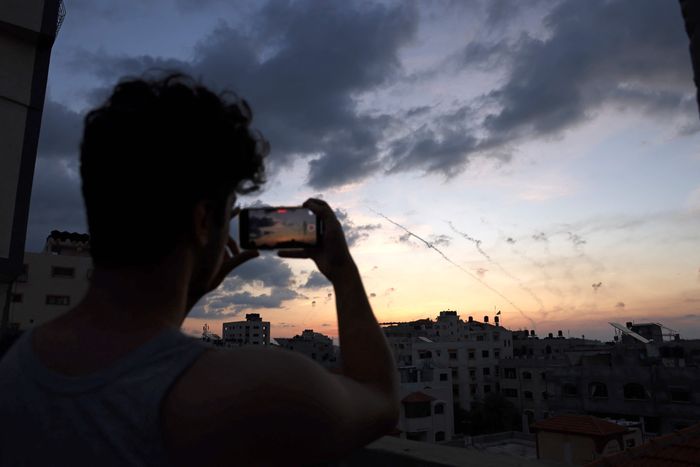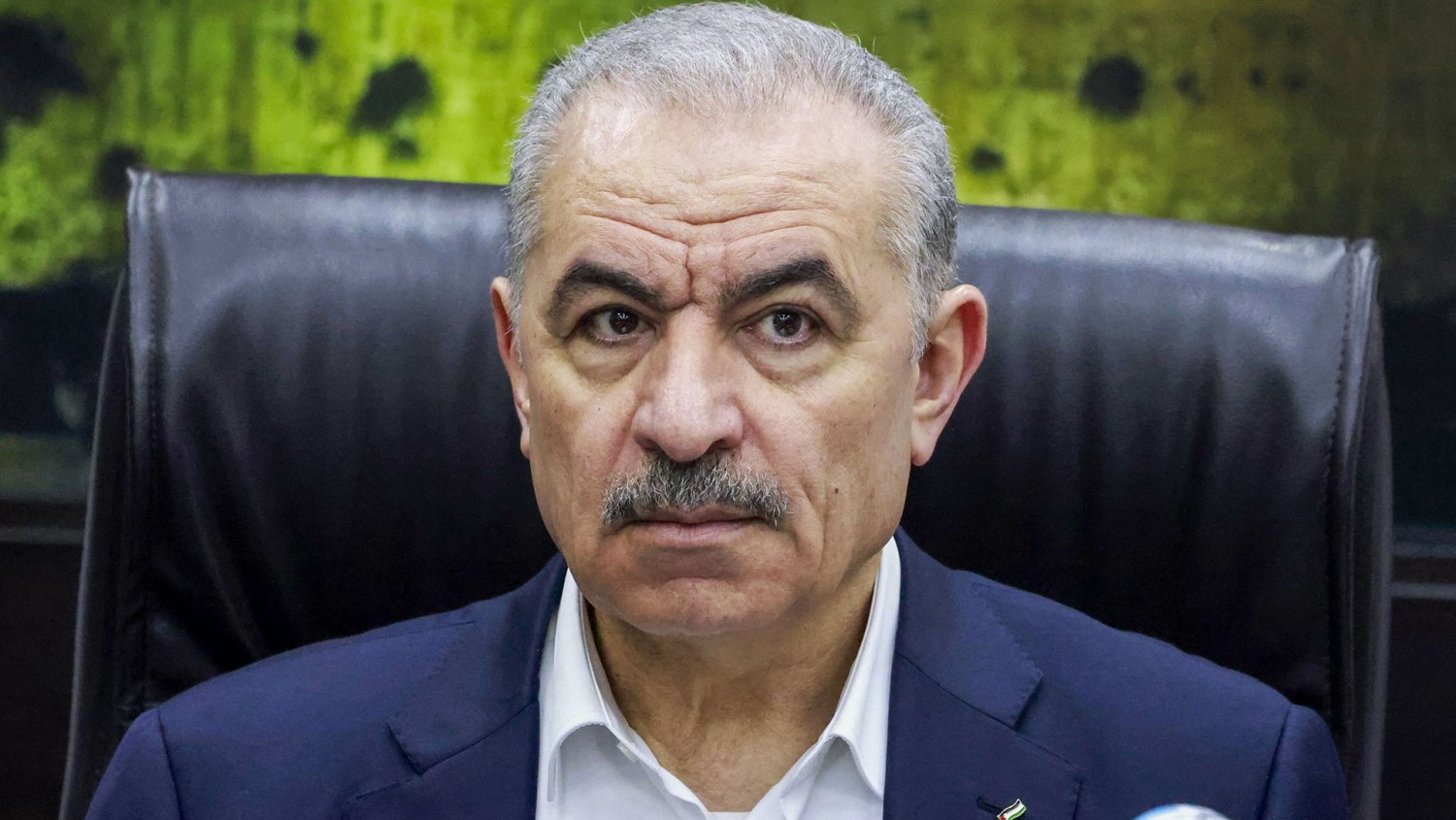
This article is more than
1 year oldGaza Strip in maps: How a year of war has drastically changed life in the territory
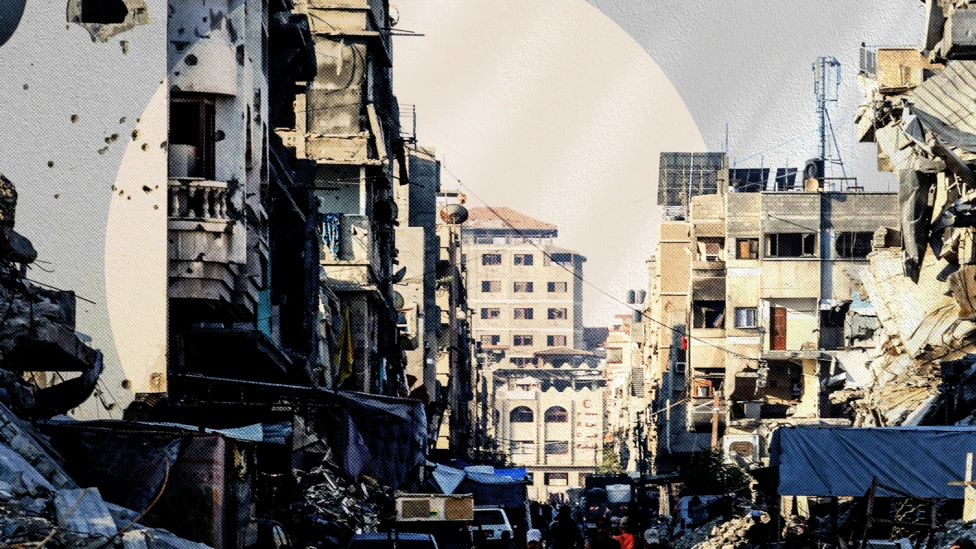
Israel says it is trying to destroy the military and governing capabilities of the Islamist group, which is committed to the destruction of Israel and has been in control of Gaza since 2007, but the war has also had a devastating impact on the people living there.
This visual guide shows some of the drastic ways life has changed for Gazans living through war that has laid waste to the territory and killed nearly 42,000 Palestinians, according to the Hamas-run health ministry.
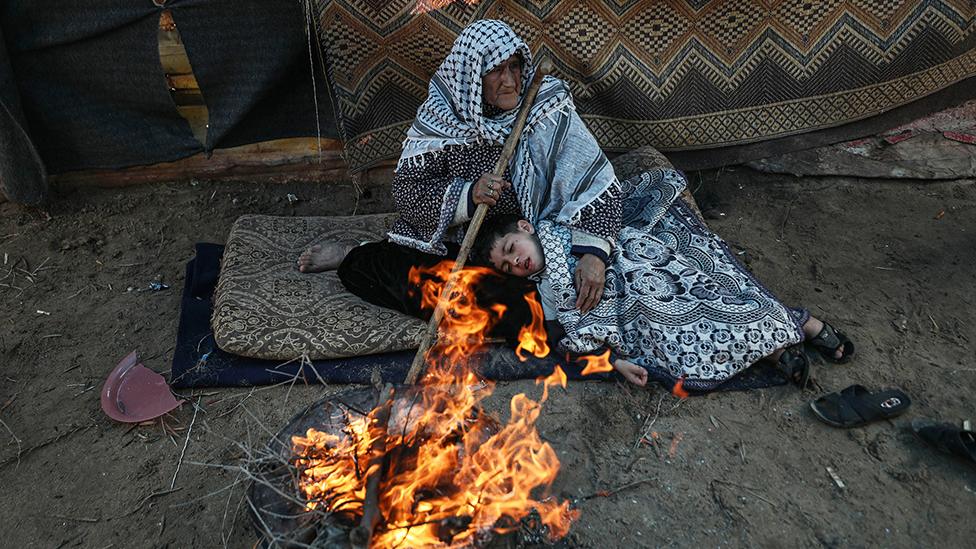
Life before the war was tough in Gaza - for years it had been the subject of an Israeli-Egyptian blockade severely limiting who and what could enter and leave, which both countries said was needed for security.
Nearly two-thirds of the population was in poverty, according to the World Bank, and thousands lived in UN-run refugee camps but it also had hospitals, schools and shops.
Asdaa City was one of Gaza's biggest amusement parks and offered respite and fun to the two million people - nearly half of them children - who live in the Strip, which is less than a quarter of the size of Greater London.
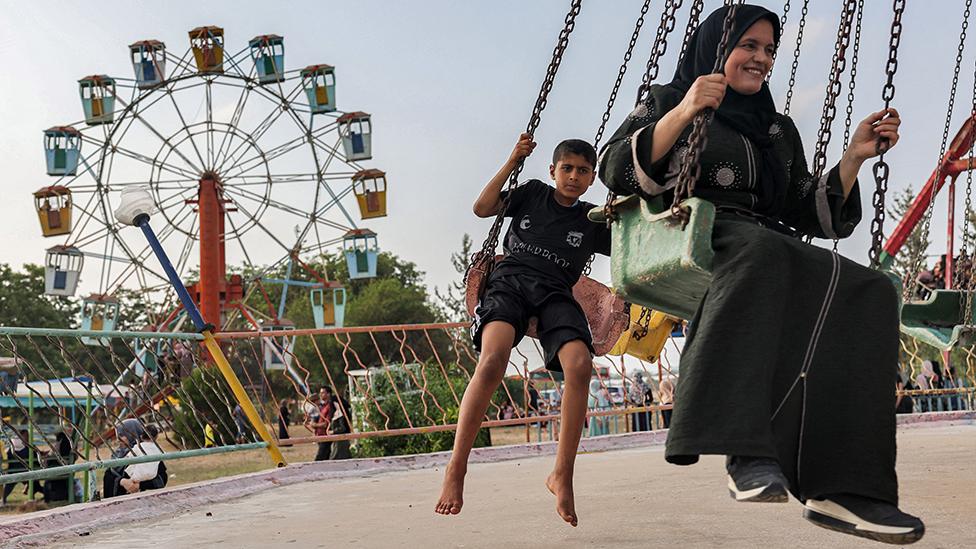
Images of the park in Khan Younis captured before Israel's invasion and those taken in recent months offer a stark illustration of how a year of conflict has upended Gaza and the lives of those who live there.

Rides have fallen into disrepair, there's no power to operate them and thousands of tents have been erected across the site to house families forced to flee there.
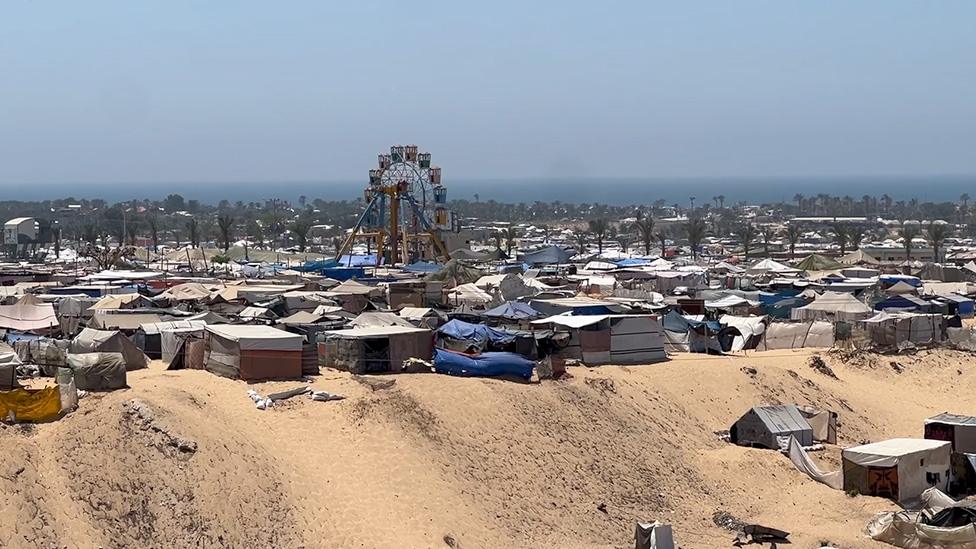
After the 7 October attacks, in which Hamas gunmen killed more than 1,200 Israelis and foreign nationals and took 251 more back to Gaza as hostages, Israel began an intense bombing campaign focused on northern Gaza - where it said Hamas fighters were hiding among the civilian population.
How the destruction spread
The northern town of Beit Hanoun, only 2km (1.2 miles) from the border, was one of the first areas hit by Israeli strikes. It sustained heavy damage.

Israel continued to bomb Gaza City and other urban centres in the north and ordered civilians to move south of the Wadi Gaza river for "safety and protection" before it began its ground invasion at the end of October.
But Israel was also launching air strikes on the southern cities which hundreds of thousands of Gazans from the north were fleeing towards. By the end of November, parts of the south of the territory lay in ruins, as did much of the north.

Israel intensified its bombing of southern and central Gaza at the start of December, before launching a ground offensive on Khan Younis, and by January more than half of Gaza's buildings had been damaged or destroyed.

One year of conflict has probably damaged close to two thirds of buildings across the Gaza Strip, with Gaza City suffering the heaviest destruction, according to experts from CUNY Graduate Center and Oregon State University who have been analysing satellite data.

Throughout the year, Hamas - which is designated as a terrorist organisation by Israel, the UK and many other countries - and its allies have been engaged in intense battles against Israeli forces on the ground. They have also been firing thousands of rockets into Israel.
Vast tent city created
Gaza - only 41km (25 miles) long and 10km wide and bounded by the Mediterranean Sea and closed borders with Israel and Egypt - is now in large parts uninhabitable.
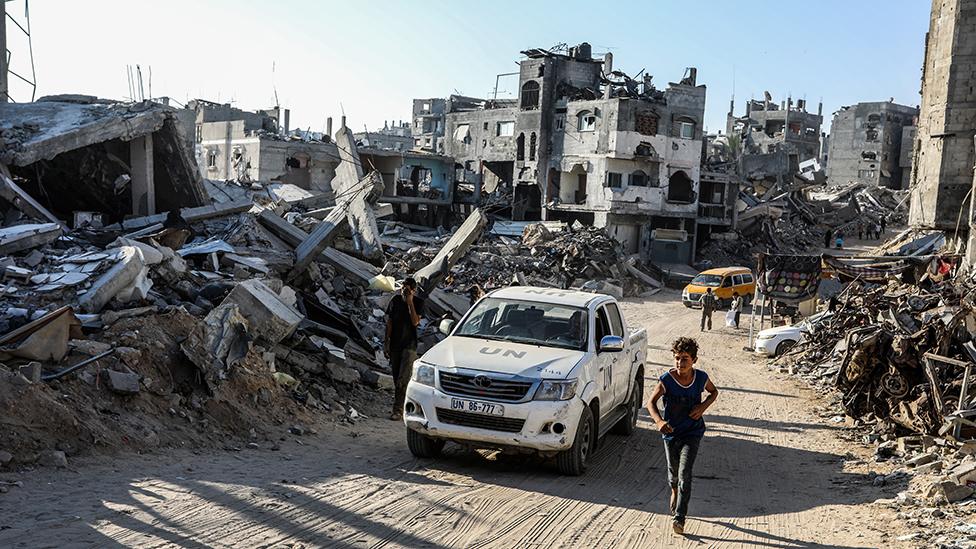
Entire districts have been razed to the ground. Agricultural land where greenhouses once stood have been reduced to sand and rubble by heavy vehicles and tanks used in clearing operations by Israeli troops.
Before the war, most of Gaza's 2.2 million people lived in its four main cities - Rafah and Khan Younis in the south, Deir al-Balah, in the centre, and Gaza City, which was home to 775,000 people - but almost the whole population have now been displaced.
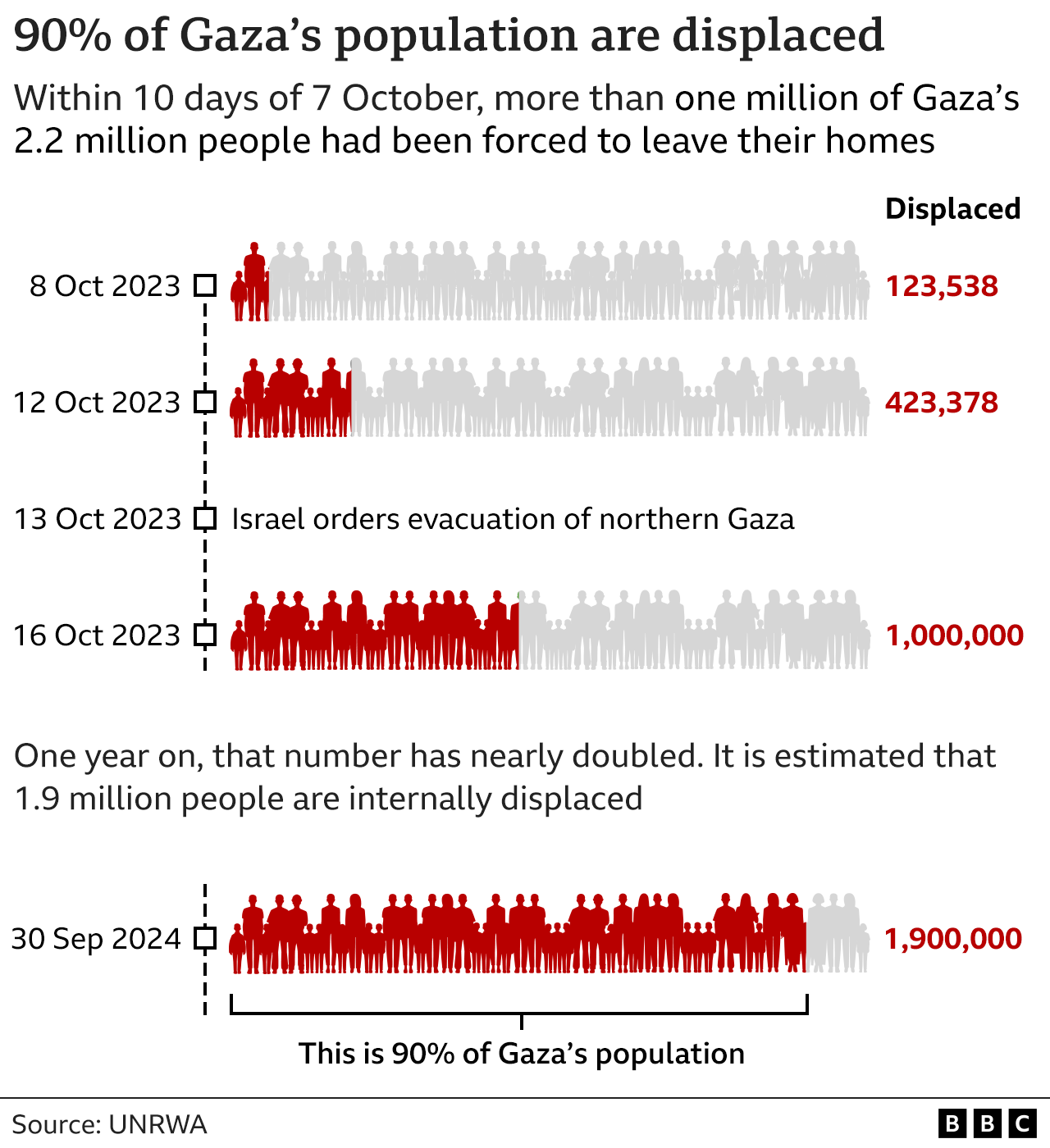
Families have been displaced multiple times as Israel changed the focus of its operation, initially telling people in the north to move south of Wadi Gaza river, which cuts the Strip roughly in half, and later declaring a series of evacuation zones in the south.

Israel expanded the zone in May, to include parts of Khan Younis and Deir al-Balah, after launching its ground offensive in Rafah, where more than a million people were sheltering.
But it has been repeatedly reduced in size since then, as Israel has targeted areas where they say Hamas is operating and launching attacks while embedded among displaced civilians.
An estimated 1.8 million people are now sheltering in al-Mawasi, which currently spans about 50 sq km (20 sq miles) and lacks critical infrastructure and basic services.
Overcrowding has become a major concern in UN emergency shelters in central and southern Gaza, with some far exceeding their capacity. Other families are living in tents or makeshift shelters in compounds or on open areas of land and beaches.
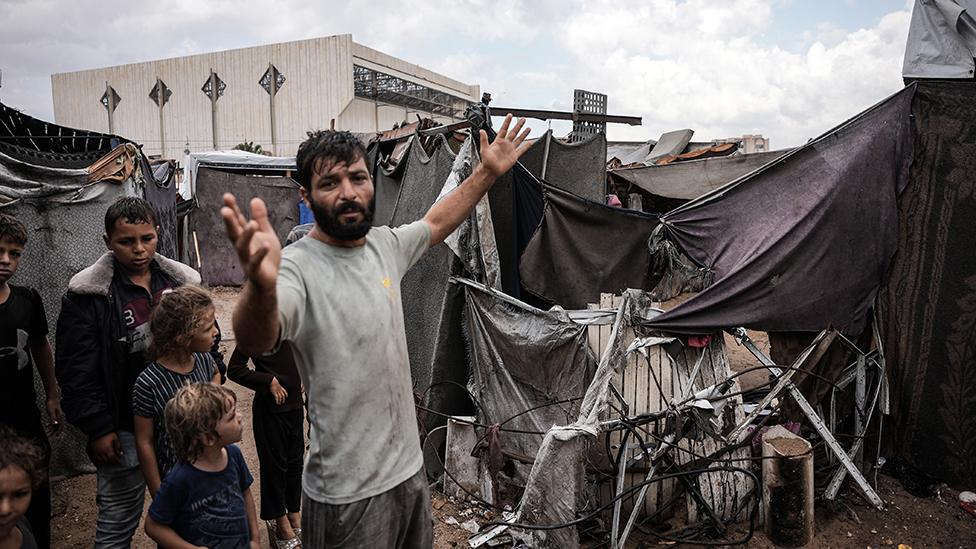
And the UN Office for the Coordination of Humanitarian Affairs (Ocha) is warning that rain and flooding during the region's approaching rainy season will only worsen the "already dire living conditions" in Gaza.
The struggle for food
Nearly 500,000 people are struggling with catastrophic hunger and there is a high risk of famine across the whole of Gaza, according to the Integrated Food Security Phase Classification (IPC), the global body responsible for declaring famine.
Even before the current conflict, about 80% of the population of Gaza was in need of humanitarian aid.

Aid deliveries stopped completely for about 10 days when Israel and Egypt closed their crossings after 7 October and they have resumed at much lower levels - with about 50 aid lorries currently entering Gaza each day in September, according to the UN.
Israel disputes the UN figures but even its data shows just 142 lorries a day, external entered in September, with the highest number of 226 a day entering in April.
In March, the World Food Programme said that addressing simple food needs would require at least 300 lorries a day to enter Gaza and distribute food - a figure that has not been reached since the conflict started.

UN officials have blamed the situation on Israeli military restrictions on aid deliveries, the ongoing hostilities and the breakdown of law and order.
Israel insists there are no limits to the amount of aid that can be delivered into and across Gaza and blames UN agencies for failing to distribute supplies. It also accuses Hamas of stealing aid, which the group denies.
Aid workers have also been killed in air strikes and have reported being fired upon by Israeli soldiers. There have also been reports of crowds looting aid lorries.
The UN says that despite aid agencies providing 600,000 meals a day across Gaza, the lack of supplies meant more than 1.4 million people did not get their food rations in September.
Poverty is soaring
The conflict has also had a devastating impact on Gaza's economy, which the World Bank said had contracted by 86% in the first quarter of 2024, the "largest economic contraction on record".
It notes that almost 100% of the population are now living in poverty compared with 64% before the war and the cost of basic supplies has risen by almost 250%.
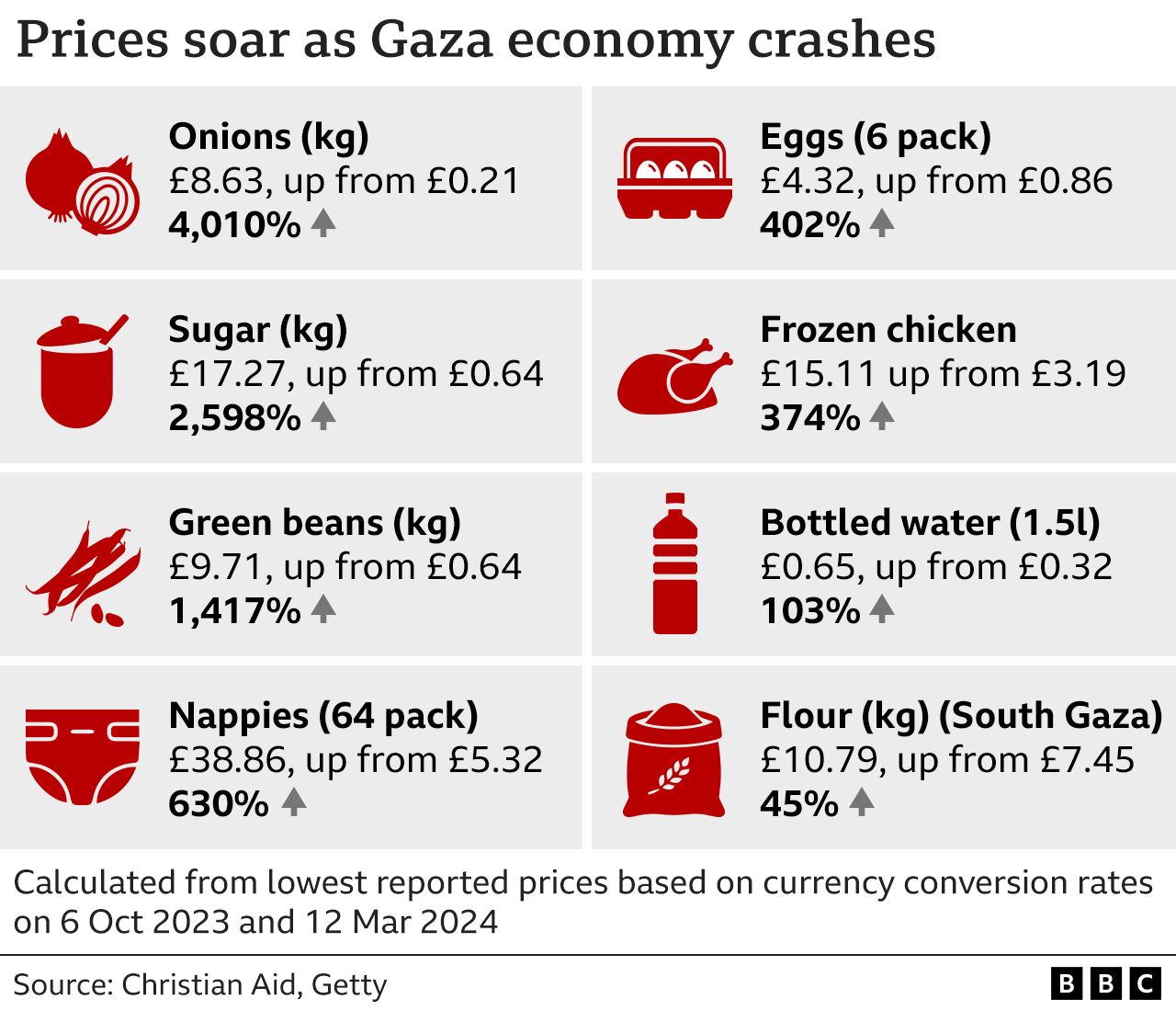
Many healthcare facilities have been left unable to function as a result of damage or lack of supplies and fuel.
Many hospitals have also been raided by Israeli forces, with the military alleging that they have been used for military purposes by Hamas. Hamas and hospital officials have denied that claim.
Gaza City's al-Shifa hospital - once the largest medical facility in Gaza - was left in ruins although it has now reopened its emergency department. The IDF says it killed or captured hundreds of "terrorists" and found weapons and intelligence "throughout the hospital" in its two major operations there.

A long recovery
Aside from the human toll, the UN Environmental Programme has warned it will take a long time to repair the damage in Gaza.
It describes the water and sanitation systems as "almost entirely defunct", warns of mounting rubbish around camps and shelters and of the risk that chemicals from destroyed solar panels and the munitions being used will contaminate soil and water supplies.
And it estimates more than 40 million tonnes of debris has accumulated from the destruction.
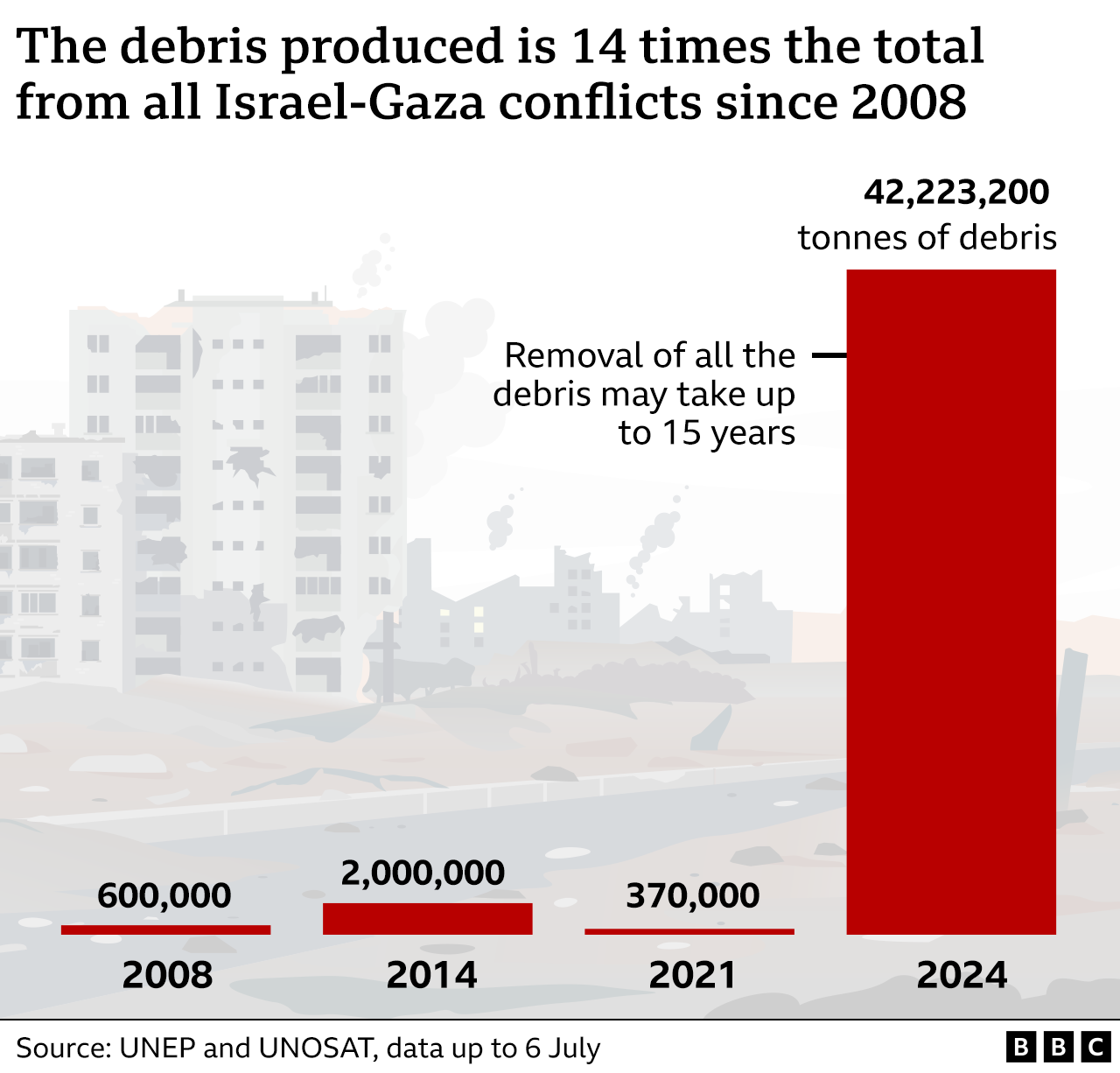
The UN Environmental Programme (UNEP) says it could take 15 years and more than $500m just to clear the debris and explosive remnants of war.
"The significant and growing environmental damage in Gaza risks locking its people into a painful, long recovery," executive director Inger Andersen said.
While Israel has turned its focus towards Lebanon in recent weeks, it is continuing operations in Gaza.
And with no sign of an end to the conflict it will be a long time before life there returns to normal.

Are you personally affected by the issues raised in this story? If it is safe to do so, please get in touch by emailing haveyoursay@bbc.co.uk, external.
